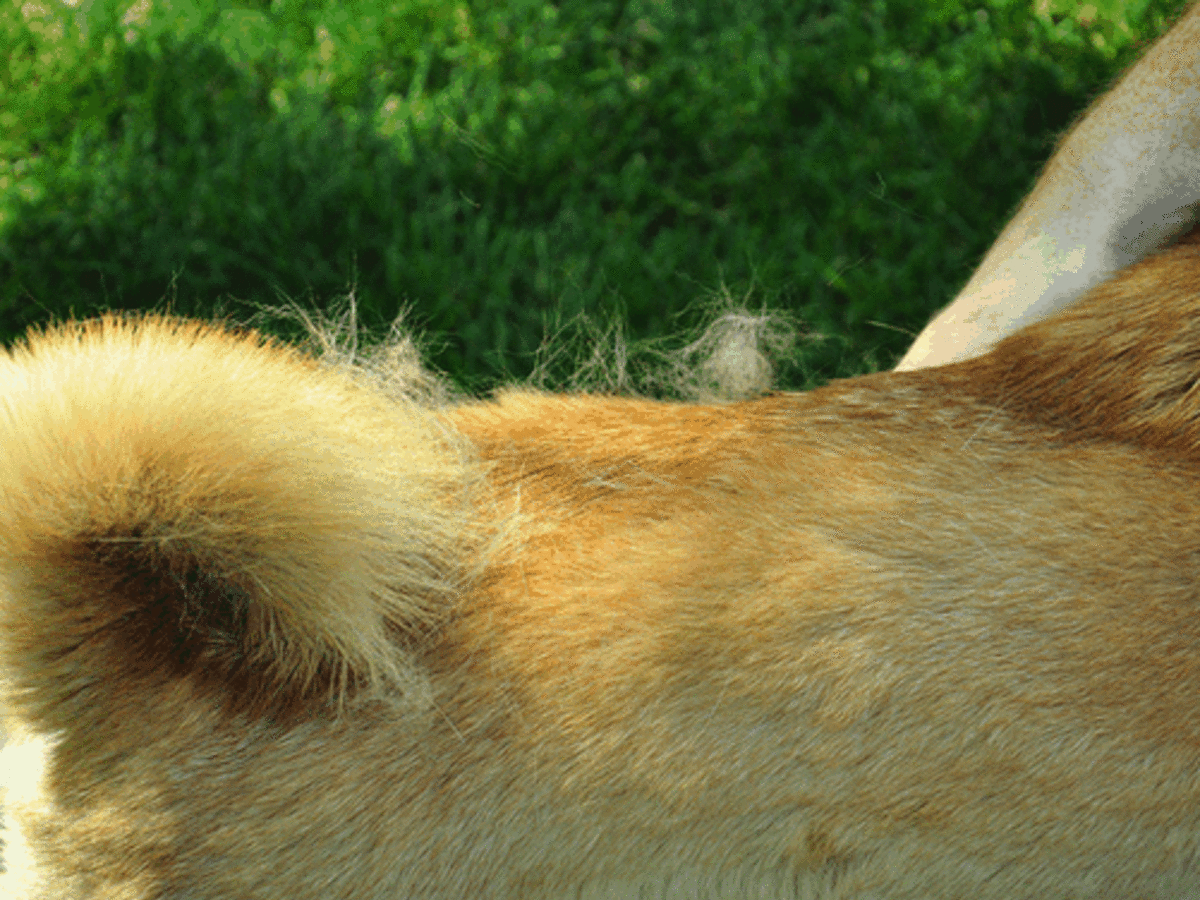
So how often should you bathe your Samoyed. As you can see in the table above you should expect the most shedding from your dog around springtime.

Anagen catagen telogen and exogen.
How long do dogs shed their hair. Moderate shedding as the coat is thicker. As you can see in the table above you should expect the most shedding from your dog around springtime. This is simply because the fur from the winter coat is thick and furry and now its time to let go of.
Some dogs have longer fur-growing cycles which makes them appear to not shed. Other dogs like collies and golden retrievers have thick double coats that may shed year-round. Some dogs blow their double coats twice a year in massive waves of furry madness.
Pups that are indoors year-round tend to shed more evenly throughout the year because their temperature is. If he has a single coat hell have only the outer coat without the insulating undercoat. Double-coat breeds have two heavy shedding cycles in late spring and late fall while single-coated breeds tend to shed only a little hair all year long.
As the days get longer your dog will shed that thick coat. This also means that indoor dogs will shed more evenly throughout the year as theyre exposed to less daylight. Typically double coated breeds will blow their coat twice a year in the fall and spring.
These are peak shedding seasons that generally last 2 - 4 weeks. During this time you can expect a big. Different dog breeds shed in different amounts.
Some shed seasonally while others shed year-round. This depends on the type of coat your dog. Some dogs shed continuously throughout their life and others on a more seasonal or cyclical basis this is known as moulting.
Some breeds shed more than others due to the type of coat they have and some shed considerably less to. Puppies lose their puppy coats between 4-to-6 months of age although this time frame varies widely from breed to breed and can start at 12 weeks or. Your puppy may begin to shed his puppy fur when hes as young as 3 months old but this varies.
During the transition his coat may appear shaggy or patchy as baby fur falls out before adult fur has a chance to replace it. This doesnt mean they cant have a dog but some dog breeds do not shed hair. Or at least they shed relatively very little.
This doesnt mean these are hypoallergenic breeds but the risk of an allergic reaction is much lower. Some people prefer dogs that dont shed hair due to hygiene reasons or a lack of time. The shedding cycle is directly related to the hair growth cycle.
During the shedding phase of the hair growth cycle hair sheds from the hair follicle. As the growth stage begins new hair comes in. Hairs that are in the resting stage are held in the follicle by friction and are not anchored in.
They fall out very easily especially during grooming. Many dogs including the Australian Cattle Dog shed throughout the year but especially during shedding season. Shedding season happens twice throughout the year during the transition from winter to summer and again from summer to winter.
Dogs shed in four different phases. Anagen catagen telogen and exogen. Barneys hair grows the fastest during the anagen phase the first phase of new hair growth.
His genetic makeup determines how long his hair follicles remain in this phase. The catagen or transition phase is when his follicles receive a signal to stop creating new growth. As mentioned earlier dachshunds are known to be a low shedding breed.
However the amount of shedding will slightly differ according to their fur type. As we already know dachshunds are classified by the fur type. Short-haired long-haired and wire-haired.
Some dachshund owners swear that their dachshunds do not shed a drop of hair but this is not. Because they are a long-haired breed these Doxies have an undercoat a second layer of coat under their long flowing hairs. And like all breeds with undercoats long-haired Doxies tend to shed seasonally or twice a year.
Why Do Short-haired Dogs Shed All-Year-Round. Short-haired dogs shed constantly because they only have one layer of coat. They dont have extra fur to get rid of after the winter season.
Instead they will shed the old hair more constantly throughout the year. As we looked at above the short-haired dog breeds are typically new single-layered breeds. While its great to clean your dog every now and then bathing too often will wash away the essential oils on the hairs that protect the dog.
So how often should you bathe your Samoyed. According to Samoyed owners it really depends on how dirty your dog is. Some give their Samoyed a bath every 2 months while others do it just twice a year.
A high-quality dog food promotes healthy hair growth and may reduce excessive shedding. Your vet can recommend coat supplements that aid in shedding minimization. A nutritional supplement designed to keep a dogs skin healthy such as Shed-X Dermaplex Shed Control Nutritional Supplement for Dogs can also prevent redness itching and excess.
Long-haired dogs are much more high maintenance than their short-haired counterparts and their hair may make them more susceptible to the negative effects of the heat and humidity in Singapore. However with proper professional dog groomer it is still possible to keep a long-haired dog in Singapore. Sunlight can trigger hair growth so in northern climates longer days will prompt new growth pushing out the old hair.
Long-haired dogs and those adapted to a colder climate with thick undercoats are subject to more shedding than other breeds. Healthier dogs with well-groomed shiny coats are less likely than unhealthy dogs to.